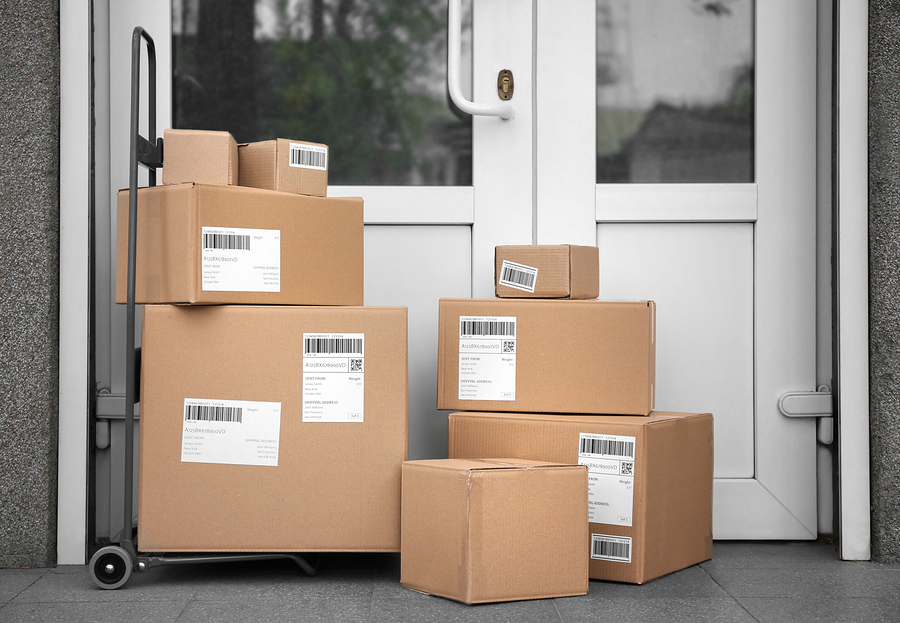One of the biggest concerns that urban dwellers and residents of multifamily units have is whether their packages will arrive in a timely manner… or at all. In fact, one report by the NMHC and Kingsley Associates found that apartment residents view a package delivery system such as a room or holding area as the second most important amenity that a housing community should contain, right behind fitness centers.
Up to 30% of Americans have been victims of “porch piracy,” and countless more have had to jump through hoop after hoop to recover costs from lost, delayed, or damaged shipments. Still others have decided to completely forgo online orders to their apartment, and instead deal with the inconvenience of using their office, or a family member’s residence, as their “ship-to” address.
In contrast, multifamily housing communities that offer a streamlined package delivery system help prevent many of these issues and add to their residents’ happiness and peace of mind. With such factors in mind, what are some package delivery system solutions currently on the market that could work for your multifamily unit(s)?
Options for a Package Delivery System
There are several alternative methods to ensure that your residents receive their shipments in a safe and secure manner. Here are three possibilities to consider, along with their pros and cons:
Incorporating package delivery into regular staff duties
Some communities have had to dedicate staff members, or at least portions of their staff members’ work shifts, solely to the purpose of delivering packages to residential units. For instance, during times of package room “spillover” one property developer and manager has had to task community staff members with unit deliveries in shifts of 8 hours at a time.
Software developers have come up with some ways to save time and boost efficiency for property managers that opt to go this route. For instance, MRI Real Estate Software has developed an app for smartphone and tablets that scans packages, verifies delivery to the correct unit, and then notifies the resident of the shipment’s successful arrival.
- Pros: This solution avoids the need for ever increasing storage space, and ensures maximum convenience and safety for residents’ packages. Some communities cover basic costs by charging a small convenience fee to their residents who benefit from this service, or increasing rent.
- Cons: There may be some costs around software purchase, installation, and training. However, the biggest drawback is payroll costs: either you’ll need to hire more staff, or your current staff will have to juggle yet another task in their busy schedule.
Installing smart lockers/individual unit lock boxes
Another option that has gained some traction in the last few years is the installation of “smart lockers” or lock boxes for each individual unit in a community. The delivery person would have access to the lock box’s code and could put the resident’s package in this secure location. Then, when the resident comes home from work later that day, he or she will be able to enter the code and retrieve the package with maximum convenience. This is similar to the Amazon Key service, except more geared towards apartment living instead of houses with a garage.
While many property managers and residents view this as an ideal package delivery system, the costs of installing individual lock boxes could be significant (or even exorbitant). For instance, even without space considerations, a basic BoxLock package costs upwards of $200 for an individual apartment; if you are managing 50 units, installing a product at every residence would run well over $10,000 in costs!
- Pros: This is a highly secure package delivery system, and your staff members don’t have to get heavily involved in the actual delivery process.
- Costs: Purchase and installation could be extremely costly.
Using a centralized depot
Many communities dedicate a room, or a specific space to package storage. Usually packages are placed in a secured locker for later pickup by residents; or in certain gated communities, the depot is near or adjacent to the guardhouse. Hub by Amazon and Luxer One are examples of this type of solution.
One potential advantage of employing a centralized package depot lies in the fact that steadily increasing pressure from the USPS is being put on the United States legislature to mandate a move to such centralized locations for all apartment communities. However, such a move could be full of potential problems (design/construction costs, available space, increased staffing, etc.) for currently existing communities.
Additionally, space issues, combined with negligent or forgetful residents, could lead to package “spillover,” which would in turn lead to a number of other issues, such as a reduction in the level of package security.
- Pros: This is generally a high-security solution, it does not require increased payroll costs, and one day it may even be mandated by law.
- Cons: Centralized depots often come with space, security, and clutter issues.
There are several methods of providing a secure and streamlined package delivery system to the residents in your multifamily units. If you’d like some additional help in determining which choice would be best for your specific circumstances, reach out to us today at the Theresa Bradley-Banta Real Estate Consultancy. We would be happy to assist.
Learn more:
Stay on Top of Apartment Trends with These Easy Tips
10 Apartment Amenities That Create Strong Communities
Smart Tech for Multifamily Properties: The Pros and Cons
***
Latest posts by Theresa Bradley-Banta (see all)
- Multifamily Common Areas Maintenance & Management Tips - March 31, 2020
- 8 Tenant Gift Ideas That Will Boost Your Bottom Line - November 11, 2019
- Need a Package Delivery System at Your Multifamily Rental Property? - October 28, 2019



